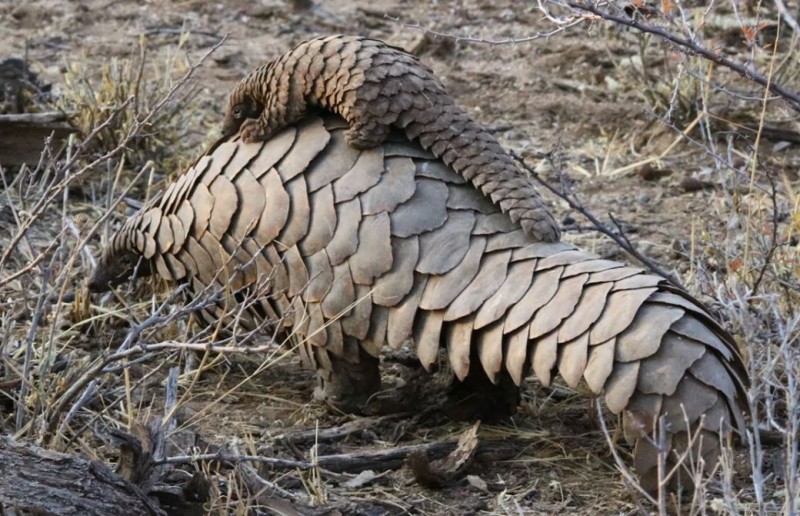
The pangolin, often referred to as a "living armored scale," is an intriguing mammal that captures the imagination of many. With its unique appearance and elusive nature, it has become one of the most trafficked animals in the world. In this article, we will delve into the fascinating world of pangolins, exploring their characteristics, the threats they face, and the various efforts undertaken to protect them from illegal trade.
1. Introduction: The Enigmatic Pangolin
The pangolin, belonging to the order Pholidota, is a unique mammal known for its distinctive scales and incredible adaptability. Pangolins are found across Asia and Africa and are known to inhabit a variety of habitats, including forests, grasslands, and even deserts. Despite their fascinating qualities, they face a severe threat due to rampant poaching and illegal trade.
2. Pangolin Species and Distribution
There are eight species of pangolins, each with its specific range and characteristics. The Asian pangolin species include the Chinese pangolin, Malayan pangolin, Indian pangolin, and Sunda pangolin. The African continent is home to the African white-bellied pangolin, black-bellied pangolin, giant pangolin, and Temminck's ground pangolin.
3. The Physical Attributes of Pangolins
Pangolins possess a unique appearance characterized by their protective scales, which are made of keratin, the same material found in human nails. These scales cover their entire body, acting as a defense mechanism against predators. Pangolins have long, sticky tongues that are essential for capturing their primary source of food—ants and termites.
4. Pangolin Behavior and Diet
Pangolins are solitary creatures that are primarily nocturnal. They use their powerful claws to excavate anthills and termite mounds, feeding on the insects found within. These remarkable creatures are capable of consuming thousands of insects in a single day, playing a crucial role in pest control within their ecosystems.
5. The Illegal Trade of Pangolins
The illegal trade of pangolins is a lucrative business driven by the demand for their scales, meat, and other body parts, which are falsely believed to possess medicinal properties and cultural significance in some regions. This demand, coupled with the pangolin's low reproductive rate and slow maturation, has led to a significant decline in their populations.
6. The Demand for Pangolin Products
Pangolin scales are highly sought after for their alleged medicinal value in traditional medicine practices. Despite lacking any scientific evidence, these beliefs persist, contributing to the illegal trade. Pangolin meat is also considered a delicacy in some countries, further fueling the demand for their capture and slaughter.
7. Environmental Impact of Pangolin Poaching
The escalating pangolin poaching crisis not only poses a severe threat to the species but also has broader environmental implications. Pangolins play a vital role in maintaining the balance of ecosystems by controlling insect populations. Their absence can lead to ecological imbalances and potential cascading effects on other species.
8. International Efforts to Combat Illegal Pangolin Trade
Governments, international organizations, and wildlife conservation groups have recognized the urgency of addressing the illegal pangolin trade. They have joined forces to combat this illicit activity through various means, including legislation, law enforcement, and partnerships.
9. Legislative Measures and Law Enforcement
Many countries have implemented strict laws and regulations to protect pangolins and combat illegal trade. These measures include banning the trade, increasing penalties for poaching and smuggling, and strengthening law enforcement efforts to detect and prosecute offenders.
10. Conservation and Rehabilitation Initiatives
Numerous conservation organizations and NGOs are actively involved in pangolin conservation and rehabilitation efforts. These initiatives focus on rescuing and rehabilitating confiscated pangolins, promoting their safe release back into the wild, and raising public awareness about the importance of protecting these unique creatures.
11. Scientific Research and Data Collection
Scientific research plays a crucial role in understanding pangolins and developing effective conservation strategies. Researchers study their behavior, reproductive biology, and habitat requirements to gain insights into their conservation needs. Collecting accurate data on pangolin populations is vital for monitoring their status and implementing targeted conservation measures.
12. Raising Awareness and Education
Raising public awareness about the plight of pangolins is key to garnering support for their protection. Educational campaigns, media outreach, and community engagement programs aim to inform people about the ecological importance of pangolins, dispel myths surrounding their use in traditional medicine, and encourage responsible consumer choices.
13. Sustainable Alternatives to Pangolin Products
Promoting sustainable alternatives to pangolin products is crucial in reducing demand and combating illegal trade. Efforts are underway to develop synthetic substitutes for pangolin scales in traditional medicine and promote sustainable livelihoods for communities involved in the trade, offering them alternative income sources.
14. Success Stories in Pangolin Conservation
Despite the challenges, there have been inspiring success stories in pangolin conservation. Increased awareness, strengthened legislation, and collaborative efforts have led to notable recoveries in certain pangolin populations. These success stories highlight the importance of collective action in protecting endangered species.
15. Conclusion
The pangolin's plight calls for immediate action to safeguard these extraordinary creatures from the clutches of illegal trade. Through legislation, law enforcement, conservation initiatives, research, and education, we can create a brighter future for pangolins. By valuing their intrinsic worth and appreciating their vital role in ecosystems, we can ensure that generations to come will witness the beauty of these incredible creatures in the wild.
The SkyBridge: Exploring the Breathtaking Pedestrian Bridge in Langkawi, Malaysia
Rise of Sustainable Tourism: How Travelers Can Contribute to Greener World
The Trans-Siberian Railway: Exploring Russia's Epic Railway Journey